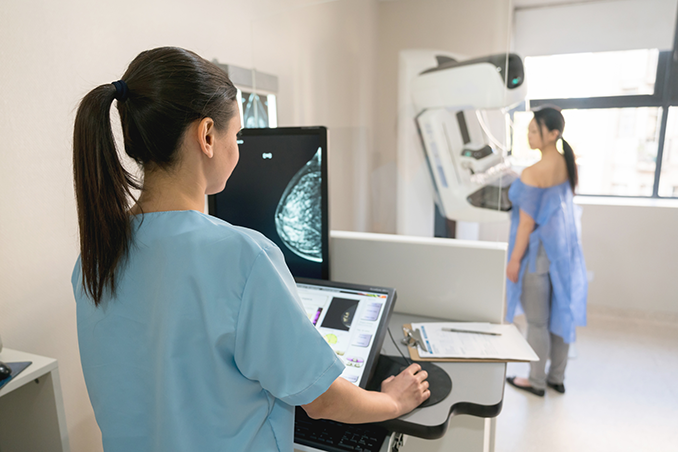Uncover the hidden connections between your family's past and your future well-being as we delve...
Read More
Understanding breast health starts with knowing what’s normal for your body and when to see your doctor. Here are five must-know facts about breast health.

1. Hormonal changes can cause breast pain
It’s normal for changes in hormone levels to cause tenderness, swelling or lumps in your breast tissue, especially just before or during your menstrual cycle. People undergoing hormone replacement therapy or those using hormonal treatments for contraception may also experience these changes.
2. Lumps and cysts are common
Breast lumps are common, especially in people under 50. “Some lumps are caused by cysts, which are fluid-filled sacs trapped inside the breast tissue,” said Benjamin DiJoseph, D.O., OB/GYN at Inspira Medical Group. “Cysts may feel soft or firm, and some people may develop multiple cysts simultaneously.” Treatment may involve draining the cyst’s fluid with a fine needle or surgery.
Other breast lumps are caused by fibroadenomas, which are non-cancerous tumors made up of glandular and connective breast tissue. They often become tender before and during your menstrual cycle and tend to shrink after menopause. Although breast lumps are usually benign, it’s necessary to get them checked by your doctor.
3. Nipple problems have many causes
Over time, many people will experience periods of change in their nipples, including discharge, irritation, soreness, bleeding, swelling and changing shape. Pregnancy, infection, and breast tissue injury can all affect your nipple health. It’s important to talk to your doctor if you have nipple discharge and you’re not pregnant or if you experience discomfort lasting several days.

4. Regular self-exams can lead to early detection
Regular self-examination of your breasts can help increase awareness of any changes to their look and feel. Although most changes detected during a self-exam are benign, some could signify a potentially serious issue.
“The American Cancer Society recommends periodic self-examination to monitor changes in your breasts. These changes can come in the form of tenderness, contour changes, asymmetry, texture changes and finally breast lumps,” said Dr. DiJoseph. “Start a self-exam by looking at your breasts in the mirror for any changes in shape, size or symmetry. Next, use your hands to massage your breast tissue, feeling for any lumps or abnormalities. Notify your doctor if you notice anything out of the ordinary.”

5. Mammograms save lives
A mammogram is an X-ray of the breast that doctors use to look for early signs of breast cancer. Annual mammograms should start at age 40. “Mammograms are the best tool for early breast cancer detection,” said Dr. DiJoseph. “They can detect malignancies up to three years before they’re physically noticeable.”
Inspira Health’s compassionate team of specialists provides personalized care, diagnostics and screening services for many breast conditions. Learn more about our approach or request an appointment today.
Inspira Health is a high reliability organization (HRO), which means safety is the top priority for patients and staff. To make an appointment, call 1-800-INSPIRA.

Uncover the hidden connections between your family's past and your future well-being as we delve...
Read More
Treating cancer requires an arsenal of tools and preventive measures. Explore the power of...
Read More
President & CEO Amy Mansue attended Inspira's Cancer Survivors Day event, organized by our Cancer...
Read More
The material set forth in this site in no way seeks to diagnose or treat illness or to serve as a substitute for professional medical care. Please speak with your health care provider if you have a health concern or if you are considering adopting any exercise program or dietary guidelines. For permission to reprint any portion of this website or to be removed from a notification list, please contact us at (856) 537-6772